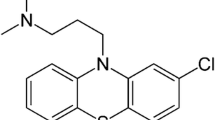Abstract
We have examined the temperature-dependent effects of several organic compounds on the activity of the purified Ca2+-ATPase of erythrocytes. The monomeric enzyme was activated either by interaction with calmodulin or by oligomerization in the absence of calmodulin. Of the four homologous solute series studied including polyols, alkanols, aprotic solvents, and N-methyl derivatives of formamide and acetamide only polyols stabilized the enzyme over a broad range of concentration and temperature. Similarity of Ca2+-ATPase activity patterns at 25 and 37°C and in the presence of glycerol is in agreement with indirect, stabilizing interactions. Glycerol also protected the Ca2+-ATPase from thermal denaturation at 45°C. Within each homologous series, inhibitory effects increased with increasing solute concentration and with increasing structural similarity to detergents, indicating that direct destabilizing interactions are responsible for the observed inhibition. These were comparable to the destabilizing effect of urea. Oligomers were more resistant to all inhibitory solutes as compared to calmodulin-activated monomers suggesting that the nonpolar patches of the oligomerized enzyme are less accessible to solutes.
Similar content being viewed by others
References
Wang KK, Villalobo A, Roufogalis BD: The plasma membrane calcium pump: a multiregulated transporter. Trends Cell Biol 2:46–52, 1992
Kosk-Kosicka D, Inesi G: Cooperative calcium binding and calmodulin regulation in the calcium-dependent adenosine triphosphatase purified from the erythrocyte membrane. FEBS Lett 189:67–71, 1985
Kosk-Kosicka D, Bzdega T: Activation of the erythrocyte Ca2+-ATPase by either self-association or interaction with calmodulin. J Biol Chem 263:18184–18189, 1988
Kosk-Kosicka D, Bzdega T: Effects of calmodulin on erythrocyte Ca2+-ATPase activation and oligomerization. Biochemistry 29:3772–3777, 1990
Kosk-Kosicka D: Comparison of the red cell Ca2+-ATPase in ghost membranes and after purification. Mol Cell Biochem 99:75–81, 1990
Kosk-Kosicka D, Bzdega T, Wawrzynow A: Fluorescence energy transfer studies of purified erythrocyte Ca2+-ATPase. J Biol Chem 264: 19495–19499, 1989
Kosk-Kosicka D, Bzdega T, Johnson JD: Fluorescence studies on calmodulin binding to erythrocyte Ca2+-ATPase in different oligomerization states. Biochemistry 29:1875–1879, 1990
Kosk-Kosicka D, Bzdega T, Wawrynow A, Watterson DM, Lukas T: Site-specific amino acid alterations in Ca2+ binding domains in calmodulin impair activation of RBC Ca2+-ATPase. Biophys J 62:77–78, 1992
Kosk-Kosicka D, Wawrzynow A, Roszczynska G: Different solute sensitivity for the RBC plasma membrane Ca2+-ATPase activation in the calmodulin-dependent and calmodulin independent pathways. Ann NY Acad Sci 671:424–427, 1992
Bzdega T, Kosk-Kosicka D: Regulation of the erythrocyte Ca2+-ATPase by mutated calmodulins with Glu Ala substitutions in the Ca2+ binding domains. J Biol Chem 267:4394–4397, 1992
Kosk-Kosicka D, Scaillet S, Inesi G: The partial reactions in the catalytic cycle of the calcium dependent adenosinetriphosphatase purified from erythrocyte membranes. J Biol Chem 261:3333–3338, 1986
Bradford MM: A rapid and sensitive method for the quantitation of microgram quantities of protein utilizing the principle of protein-dye binding. Anal Biochem 72:248–254, 1976
Lecocq J, Inesi G: Determination of inorganic phosphate in the presence of adenosine triphosphate by the molybdo-vanadate method. Anal Biochem 15:160–163, 1966
Lanzetta P, Alvarez LJ, Reinach P, Candia O:An improved assay for nanomole amounts of inorganic phosphate. Anal Biochem 100:95–97, 1979
Fabiato A, Fabiato F: Calculator programs for computing the composition of the solutions containing multiple metals and ligands used for experiments in skinned muscle cells. J Physiol (Paris) 75:463–505, 1979
Schwartzenbach G, Senn H, Andereff G: Chim Acta 40:1886–1900, 1957
Blinks J, Wier W, Hess P, Prendergast F: Measurement of Ca2+ concentrations in living cells. Prog Biophys Mol Biol 40:1–114, 1982
Combes D, Graber M, Ye WN: Stabilizing effect of polyhydric alcohols: influence of the enzyme. Ann NY Acad Sci 613:559–563, 1990
Bull HB, Breese K: Protein hydration. 1. Binding sites. Arch Biochem Biophys 128:488–496, 1968
Prakash V, Loucheux C, Scheufele S, Gorbunoff MJ, Timasheff SN: Interactions of proteins with solvent components in 8 M urea. Arch Biochem Biophys 210:455–464, 1981
Gekko K, Timasheff SN: Mechanism of protein stabilization by glycerol: preferential hydration in glycerol-water mixtures. Biochem 20:4667–4676, 1981
Collins KD, Washabaugh MW: The Hofmeister effect and the behaviour of water at interfaces. Quart Rev Biophys 18:323–422, 1985
Tanford C: In: The Hydrophobic Effect. John Wiley & Sons, New York, 1980
Lee JC, Timasheff SN: Partial specific volumes and interactions with solvent components of proteins in guanidine hydrochloride. Biochem 13:257–265, 1974
Creighton TE: In: WH Freeman (ed.). Proteins, 2nd Ed. New York, 1993
Melgunov VI, Jindal S, Belikova MP: Short-chain alkanols and the functional efficiency of the Ca pump in the sarcoplasmic reticulum of rabbit skeletal muscles. FEBS Lett 227:157–160, 1988
Timasheff SN: In: TJ Ahern, MC Manning (eds). Stability of Protein Pharmaceuticals. Part B.In Vivo pathways of Degradation and Strategies for Protein Stabilization. Plenum Press, 1992, pp 265–286
Brandts JF: Heat effects on proteins and enzymes. In: AH Rose (ed.). Thermobiology. Academic Press, New York, 1967, pp 25–72
Brandts JF, Hunt L: The thermodynamics of protein denaturation III. The denaturation of ribonuclease in water and in aqueous urea and aqueous ethanol mixtures. J Am Chem Soc 89:4826–4838, 1967
Paudel HK, Carlsson GM: The quaternary structure of phosphorylase kinase as influenced by low concentrations of urea. Evidence suggesting a structural role for calmodulin. Biochem J 268:393–399, 1990
Garza-Ramos G, Fernandez-Velasco DA, de Gomez-Puyou MT, Gomez-Puyou A: Water and enzymes in organic solvents. In: A Gomez-Puyou (ed.). Biomolecules in Organic Solvents. CRC Press, Boca Raton, 1992, pp 113–131
Author information
Authors and Affiliations
Rights and permissions
About this article
Cite this article
Kosk-Kosicka, D., Wawrzynow, A. & Roszczynska, G. Stabilizing and destabilizing effects on plasma membrane Ca2+-ATPase activity. Mol Cell Biochem 139, 1–9 (1994). https://doi.org/10.1007/BF00944197
Received:
Accepted:
Issue Date:
DOI: https://doi.org/10.1007/BF00944197




